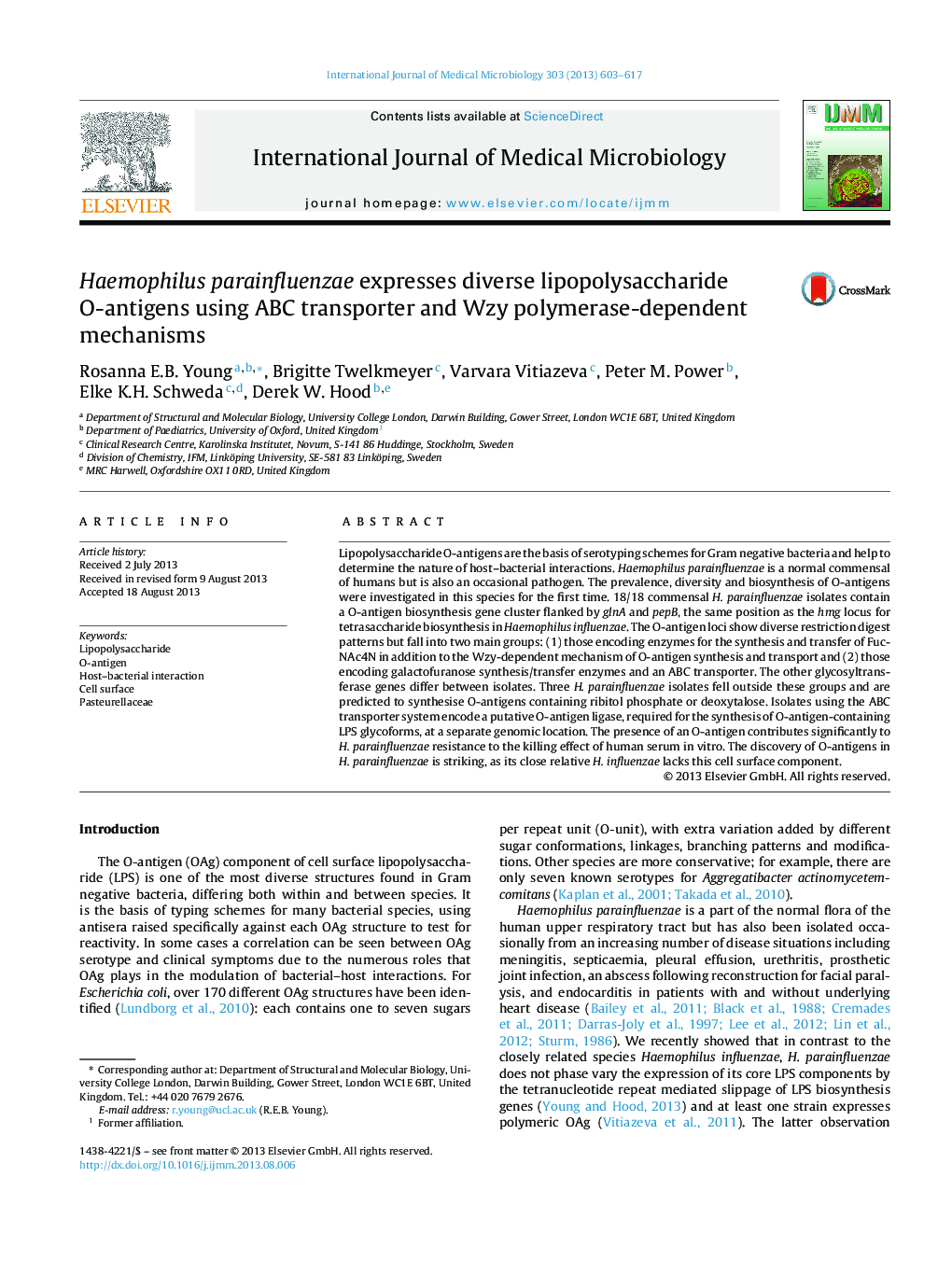| Article ID | Journal | Published Year | Pages | File Type |
|---|---|---|---|---|
| 8385914 | International Journal of Medical Microbiology | 2013 | 15 Pages |
Abstract
Lipopolysaccharide O-antigens are the basis of serotyping schemes for Gram negative bacteria and help to determine the nature of host-bacterial interactions. Haemophilus parainfluenzae is a normal commensal of humans but is also an occasional pathogen. The prevalence, diversity and biosynthesis of O-antigens were investigated in this species for the first time. 18/18 commensal H. parainfluenzae isolates contain a O-antigen biosynthesis gene cluster flanked by glnA and pepB, the same position as the hmg locus for tetrasaccharide biosynthesis in Haemophilus influenzae. The O-antigen loci show diverse restriction digest patterns but fall into two main groups: (1) those encoding enzymes for the synthesis and transfer of FucNAc4N in addition to the Wzy-dependent mechanism of O-antigen synthesis and transport and (2) those encoding galactofuranose synthesis/transfer enzymes and an ABC transporter. The other glycosyltransferase genes differ between isolates. Three H. parainfluenzae isolates fell outside these groups and are predicted to synthesise O-antigens containing ribitol phosphate or deoxytalose. Isolates using the ABC transporter system encode a putative O-antigen ligase, required for the synthesis of O-antigen-containing LPS glycoforms, at a separate genomic location. The presence of an O-antigen contributes significantly to H. parainfluenzae resistance to the killing effect of human serum in vitro. The discovery of O-antigens in H. parainfluenzae is striking, as its close relative H. influenzae lacks this cell surface component.
Related Topics
Life Sciences
Biochemistry, Genetics and Molecular Biology
Biochemistry, Genetics and Molecular Biology (General)
Authors
Rosanna E.B. Young, Brigitte Twelkmeyer, Varvara Vitiazeva, Peter M. Power, Elke K.H. Schweda, Derek W. Hood,
